Home » Deprivation & Inequalities

The proposed study is aligned with the ongoing ADR ‘OCCUMEN Study’ which examines the prevalence and correlates of mental disorders (MDs) across occupational categories. This related study will examine sex-specific temporal trends in mental disorders and causes of death across occupation types before and following the onset of the Covid-19 (C-19) pandemic and examine associations with family responsibilities.

Social determinants of health are defined by the World Health Organization as the conditions in which people are born, grow, live, work, and age (US Department of Health and Human Services, 2020). Living in an area of deprivation is a key field of study. Recent research suggests that while area-level deprivation may persist, there is movement of people in and out of these areas (the churn) (Jiang, Pacheco & Dasgupta, 2019). Within NI we can use indicators of deprivation and disadvantage to identify areas and populations that appear to stagnate, i.e. are persistently lacking in social and especially economic change. Additionally, we will examine the socio-demographic and socio-economic characteristics of families who migrate from such communities and the lasting impact, if any, that relocation may have on the life-chances of their children.

Carers are increasingly important in providing help and support to people with a health condition or who have trouble with everyday activities. Children and young people who provide care (“young carers”) are an often overlooked but important group of carers. Young carers are a particularly difficult group to recruit and retain in large scale longitudinal population studies. There have been very few longitudinal studies of young carers thus far and most of the previous research has been cross-sectional. There has also been very little exploration of inequalities in the effects of being a young carer to look at whether associations differ by gender, ethnicity or socioeconomic circumstances.

Health is a major component of wellbeing. It is difficult to be fully participant in family and community life, to work to one’s potential and to enjoy life, without good health.

Socioeconomic status (SES) is often seen to relate to health inequalities. Wilkinson (1997) found that mortality in developed countries is affected significantly by relative living standards within the population. Social position and material circumstances are said to influence both physiological effects of a lower standard of living and also the psychosocial condition of individuals.

This project analyses associations between deprivation, occupational advancement (mobility), health and mental health over the human life course in Northern Ireland in the period from 1981 to 2011. The focus is on comparisons of pathways and long-term effects of material deprivation, employment deprivation and educational deprivation across and between age-cohorts and generations. The project will look at the occupational employment trajectories and health trajectories of young people as they grow older and of older people over their life-course. Comparisons of pathways within and between cohorts are highly likely to give invaluable insights into age- period- and cohort-effects, thus allowing for conclusions about deprivation effects within and between generations in Northern Ireland.

Recent evidence suggests that residential segregation between Catholics and Protestants in Northern Ireland (NI) has declined (Shuttleworth, Barr, & Gould, 2013), and that the proportion of residentially ‘mixed’ areas has grown (Shuttleworth & Lloyd, 2014).* Accordingly, this development offers the potential to uncover two distinct, but possibly related phenomena. Firstly, it may allow some of the mechanisms of neighbourhood effects to be uncovered (Galster, 2012; 2008), and secondly it affords the opportunity to conduct research on peoples’ real-life experiences of intergroup contact (Pettigrew & Tropp, 2011).

It is well known that migration sorts people between places according to individual socio-demographic characteristics. This project aims to add to this evidence base by focussing on the characteristics in 2001 of those who entered, left and moved within the group of SOAs that were eligible for inclusion in the Social Investment Fund (SIF) according to criteria provided by OFMDFM. The analysis will group SOAs by selected social deprivation domains such as health with flows in and out of the top 10% and 20% most deprived between 2001 and 2010 as the focus for analysis.


